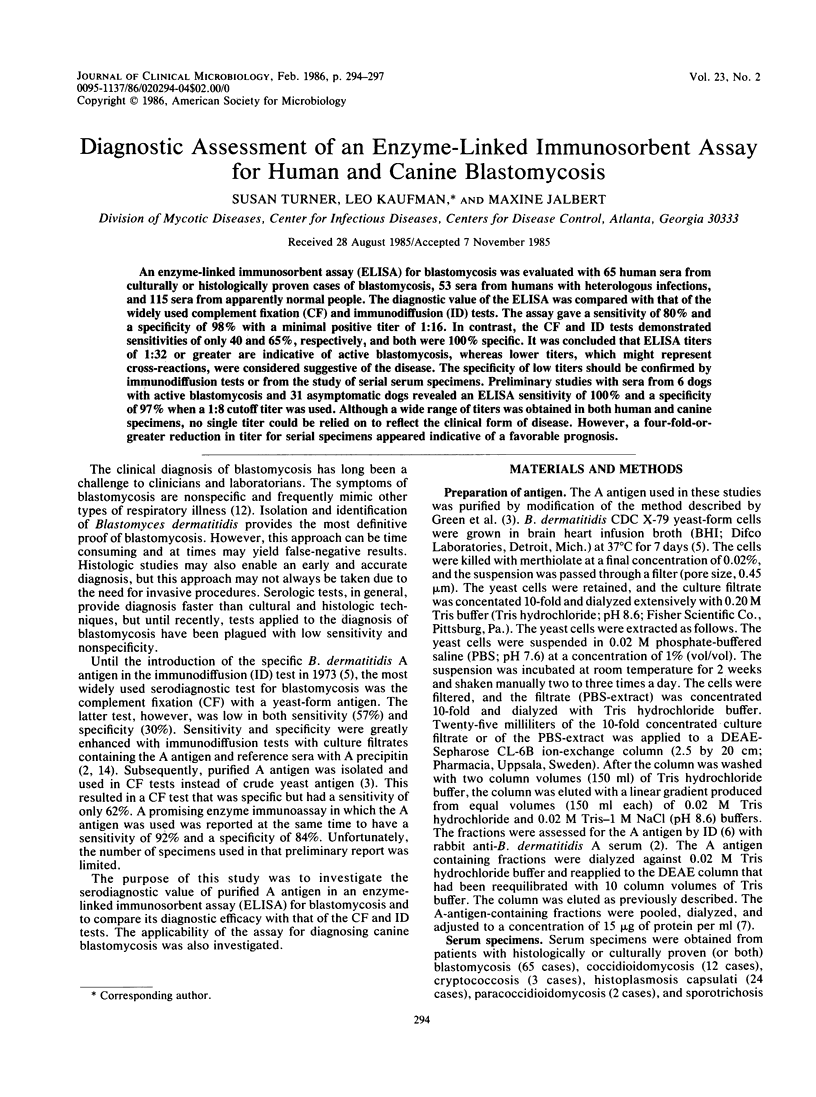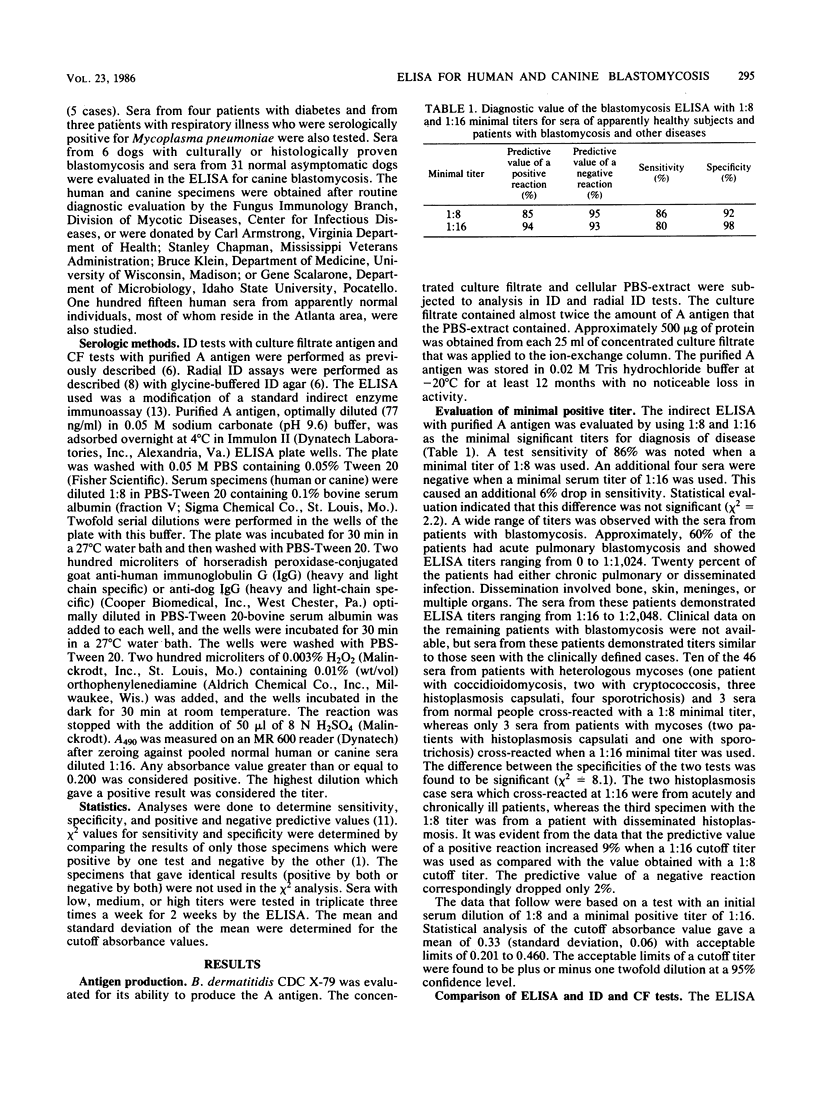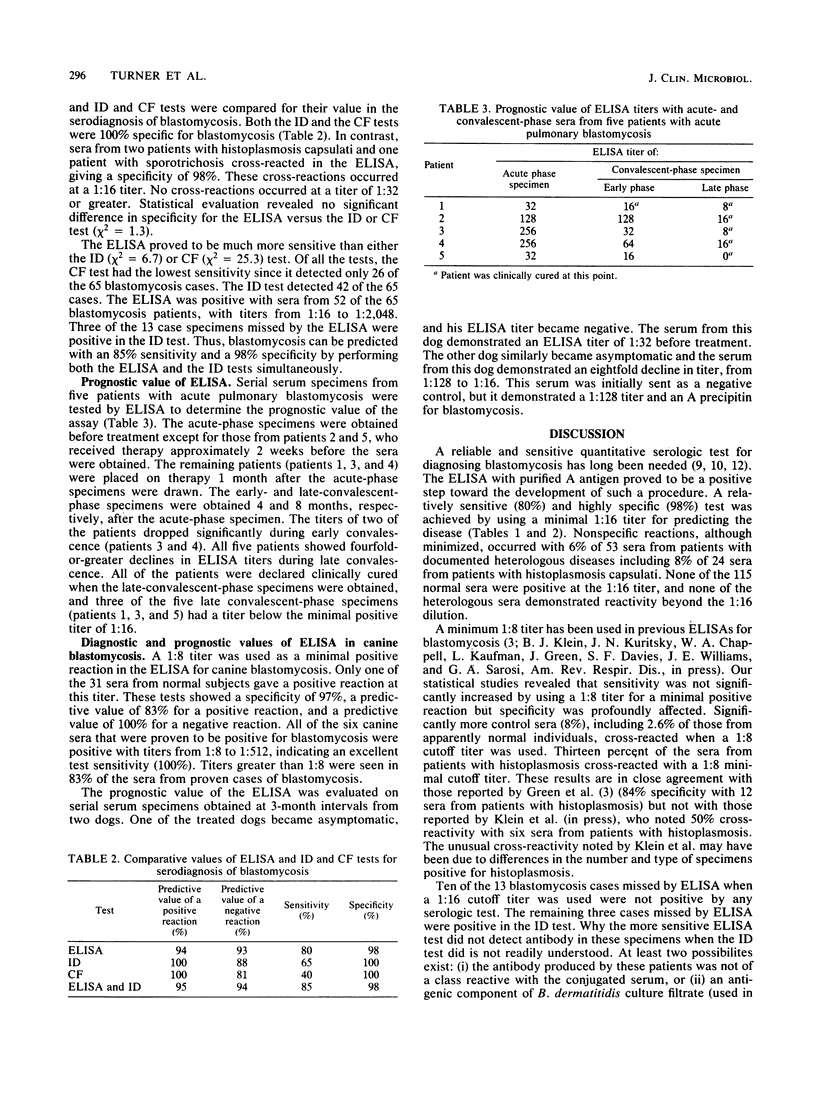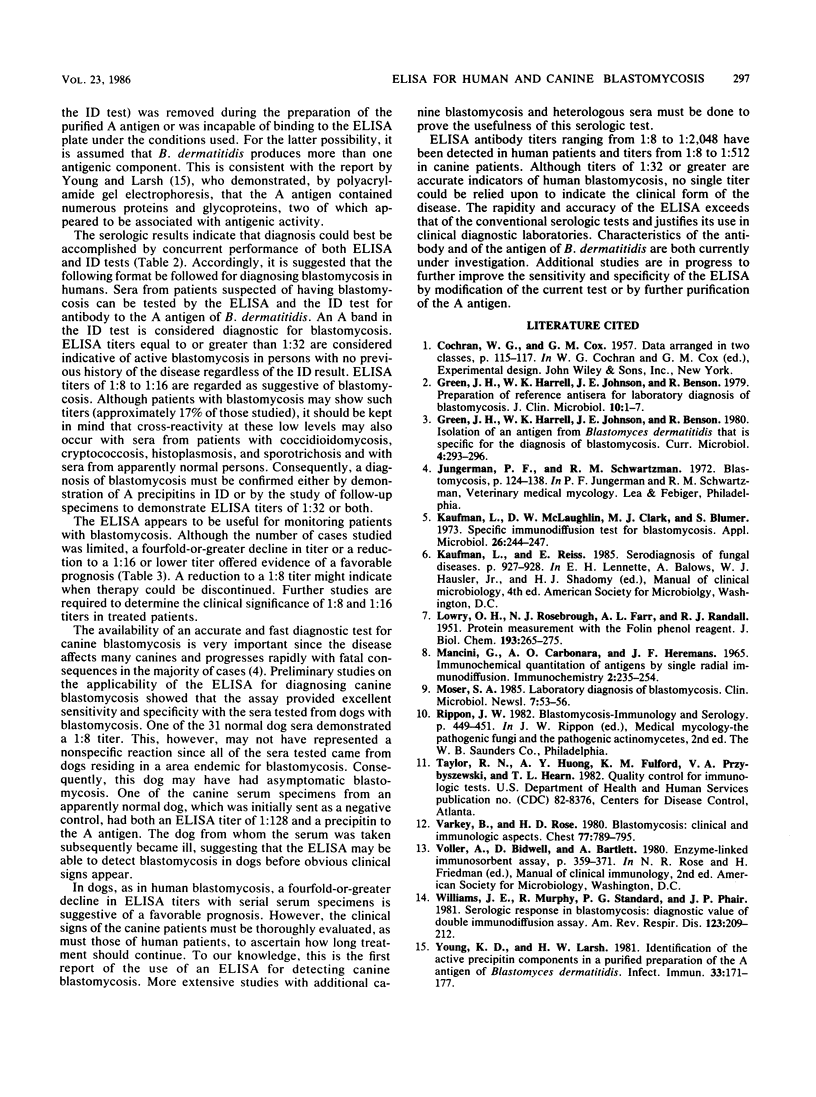Abstract
An enzyme-linked immunosorbent assay (ELISA) for blastomycosis was evaluated with 65 human sera from culturally or histologically proven cases of blastomycosis, 53 sera from humans with heterologous infections, and 115 sera from apparently normal people. The diagnostic value of the ELISA was compared with that of the widely used complement fixation (CF) and immunodiffusion (ID) tests. The assay gave a sensitivity of 80% and a specificity of 98% with a minimal positive titer of 1:16. In contrast, the CF and ID tests demonstrated sensitivities of only 40 and 65%, respectively, and both were 100% specific. It was concluded that ELISA titers of 1:32 or greater are indicative of active blastomycosis, whereas lower titers, which might represent cross-reactions, were considered suggestive of the disease. The specificity of low titers should be confirmed by immunodiffusion tests or from the study of serial serum specimens. Preliminary studies with sera from 6 dogs with active blastomycosis and 31 asymptomatic dogs revealed an ELISA sensitivity of 100% and a specificity of 97% when a 1:8 cutoff titer was used. Although a wide range of titers was obtained in both human and canine specimens, no single titer could be relied on to reflect the clinical form of disease. However, a four-fold-or-greater reduction in titer for serial specimens appeared indicative of a favorable prognosis.
Full text
PDF



Selected References
These references are in PubMed. This may not be the complete list of references from this article.
- Green J. H., Harrell W. K., Johnson J. E., Benson R. Preparation of reference antisera for laboratory diagnosis of blastomycosis. J Clin Microbiol. 1979 Jul;10(1):1–7. doi: 10.1128/jcm.10.1.1-7.1979. [DOI] [PMC free article] [PubMed] [Google Scholar]
- Kaufman L., McLaughlin D. W., Clark M. J., Blumer S. Specific immunodiffusion test for blastomycosis. Appl Microbiol. 1973 Sep;26(3):244–247. doi: 10.1128/am.26.3.244-247.1973. [DOI] [PMC free article] [PubMed] [Google Scholar]
- LOWRY O. H., ROSEBROUGH N. J., FARR A. L., RANDALL R. J. Protein measurement with the Folin phenol reagent. J Biol Chem. 1951 Nov;193(1):265–275. [PubMed] [Google Scholar]
- Varkey B., Rose H. D., Lohaus G., Sohnle P. G. Blastomycosis: clinical and immunologic aspects. Clinical conference in pulmonary disease from Wood Veterans Administration Medical Center and Medical College of Wisconsin, Milwaukee. Chest. 1980 Jun;77(6):789–795. doi: 10.1378/chest.77.6.789. [DOI] [PubMed] [Google Scholar]
- Williams J. E., Murphy R., Standard P. G., Phair J. P. Serologic response in blastomycosis: diagnostic value of double immunodiffusion assay. Am Rev Respir Dis. 1981 Feb;123(2):209–212. doi: 10.1164/arrd.1981.123.2.209. [DOI] [PubMed] [Google Scholar]
- Young K. D., Larsh H. W. Identification of the active precipitin components in a purified preparation of the A antigen of Blastomyces dermatitidis. Infect Immun. 1981 Jul;33(1):171–177. doi: 10.1128/iai.33.1.171-177.1981. [DOI] [PMC free article] [PubMed] [Google Scholar]


